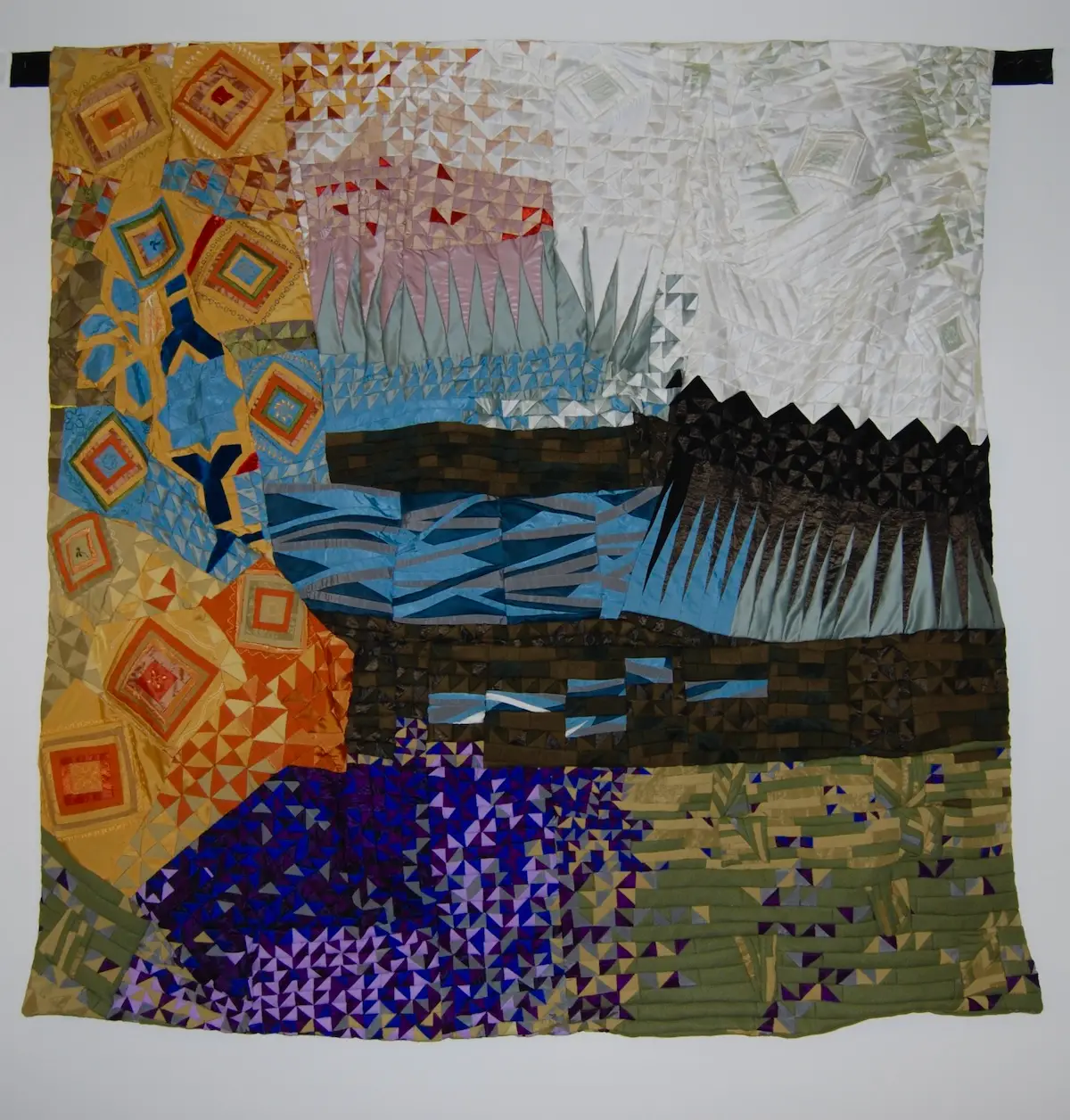Victoria Carley’s path to textile art isn’t a straight line—more like a series of quiet turns that eventually clicked into place. With roots in watercolor, paper sculpture, and landscape architecture, she brings a thoughtful, layered approach to her textile compositions.
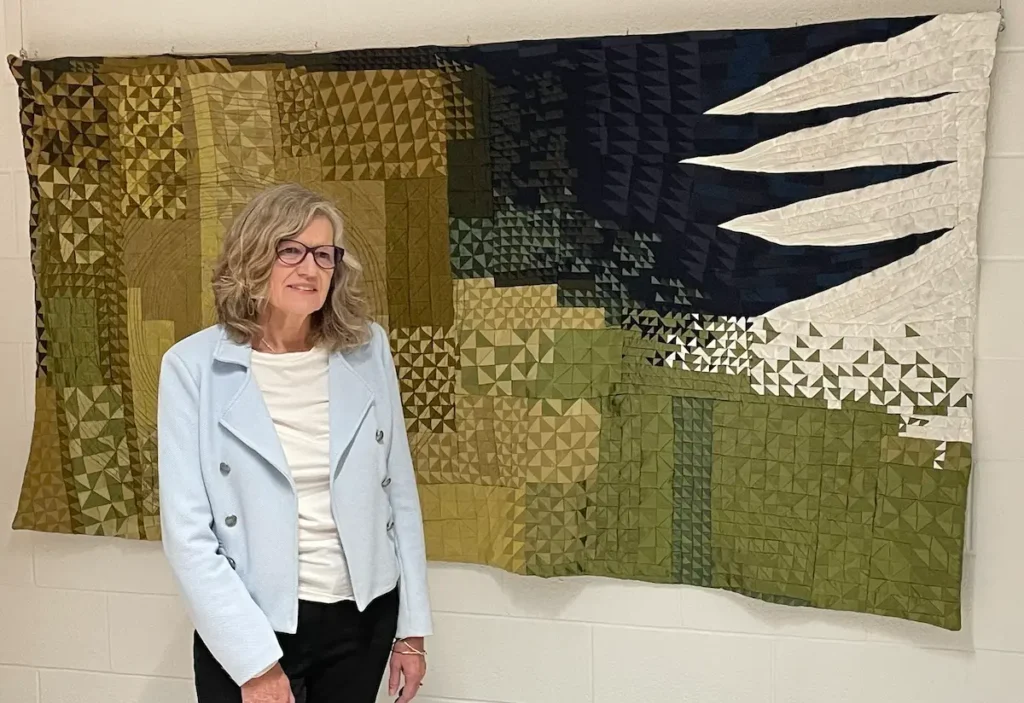
What part of your art education is most relevant to your work today?
When I was at art college, I was able to take a wide variety of subjects, including fine crafts.
At the end of my studies my primary medium was watercolours and, prior to going to university to study Landscape Architecture, I had several gallery shows of my watercolours, but the course I enjoyed most and may be most relevant to my textile work was Paper Sculpture.
Very few people do paper sculpture but it, like my textile work, requires selecting a pallet from existing elements (papers) and slowly cutting and assembling to make the ‘picture’
As an Amazon Associate I earn from qualifying purchases. Read more about our affiliate linking policy.
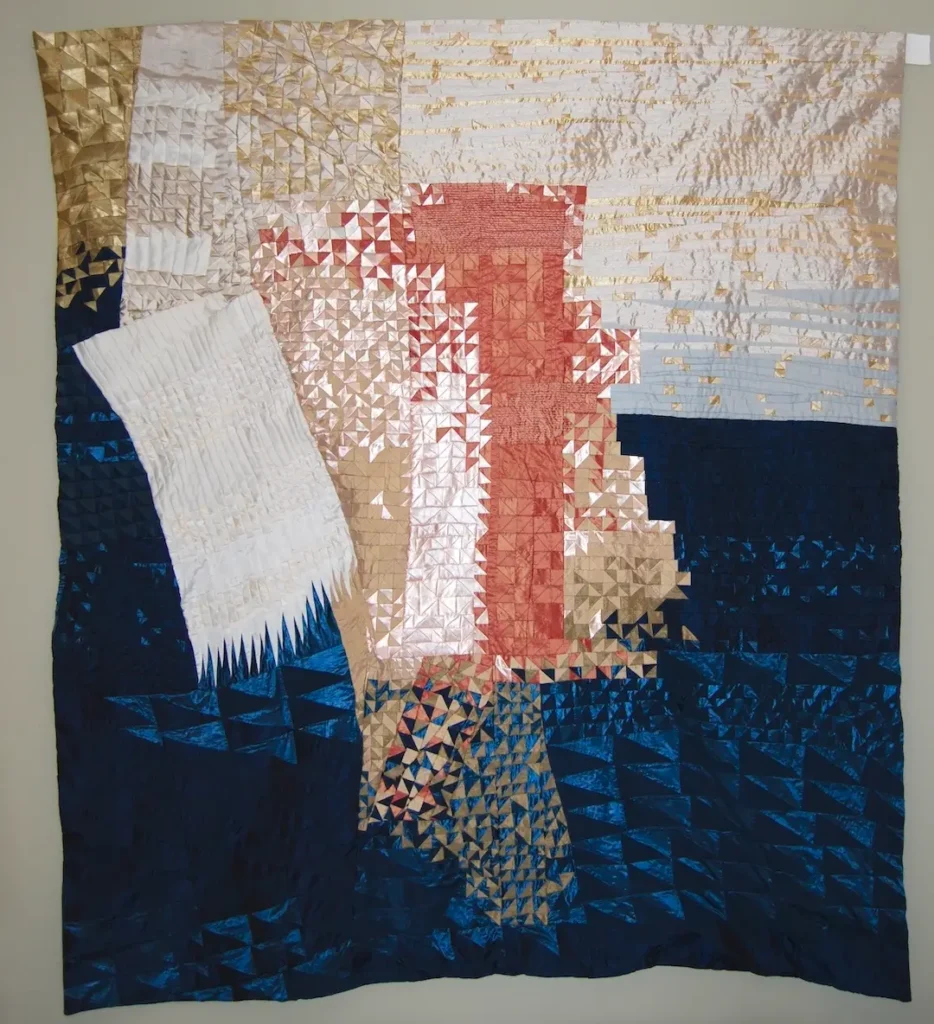
You studied landscape architecture and later started textile art. How did that transition come about?
This is an interesting question because I don’t know the answer.
I had always done some home sewing and embroidery, but I never thought of it as anything that particularly interested me. And then I just started making quilts out of upholstery fabrics, and suddenly I was spending hours a day at the sewing machine and moving away from practical quilts to more abstract compositions.

How does your background in landscape architecture shape the way you compose a textile?
In my work as a Landscape Architect, I was always designing to resolve a problem or enhance the use of space first, and then layering on the colours and textures of the various building materials and plants to make a pleasing and beautiful place.
In my textile work, I am not solving any problems, so I use my title as the basis for the composition, and then through the selection and layers of fabrics and embroidery, I build towards the finished composition.

You’ve grouped work into series like The Myths, Fairy Tales, and Memory — how do you choose a theme?
An image and a title will come together for me in various ways but it is usually an image or a phrase that is the spark.
For example, the titles of the pieces in my series of Storms are things that people have said to me when describing weather events. People love to talk about the weather and the phrase “The lake looked like an ocean” was part of a conversation and it really stuck with me as being wonderfully evocative.
I’m not sure what started me on the Myths but that was a very fun series because there is lot of source material. The Fairy Tales grew out of the myths. At the moment, my work is based on things I see, especially looking at the sky, so it is a return to the Memories.
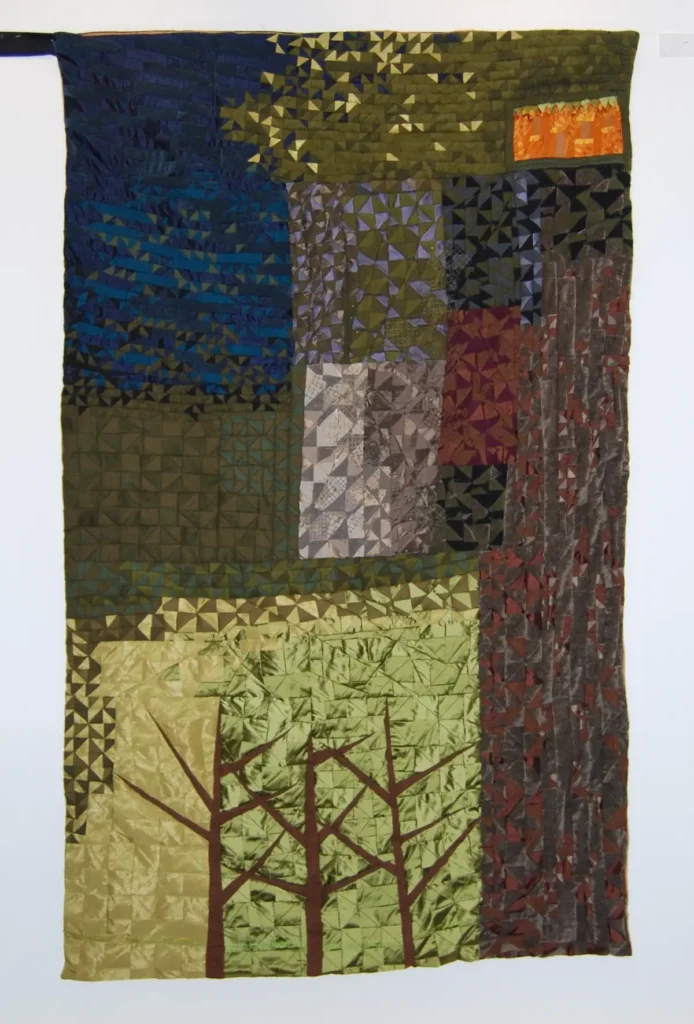
When you work with myth or fairy-tale material, do you retell the story or try to find the emotion inside it?
The Myths and Fairy Tale series are more about looking at the way in which the myths and stories have been depicted in art and illustrations over the years and thinking about why the artists had interpreted the story as they had.
If you look closely at most of the stories they are pretty bleak, and things don’t go well for women. Women don’t always play a major role in the story, but in many of my works, I focus on them. Partly this is because they are usually only seen through the male gaze in paintings, and it isn’t always kind or accurate.

Describe your creative space.
I have a small and extremely messy creative space. I never got around to getting a proper layout table or a design wall, and now I am so used to working without them, I probably never will.
I do have piles of fabrics and a wonderful old sewing machine.
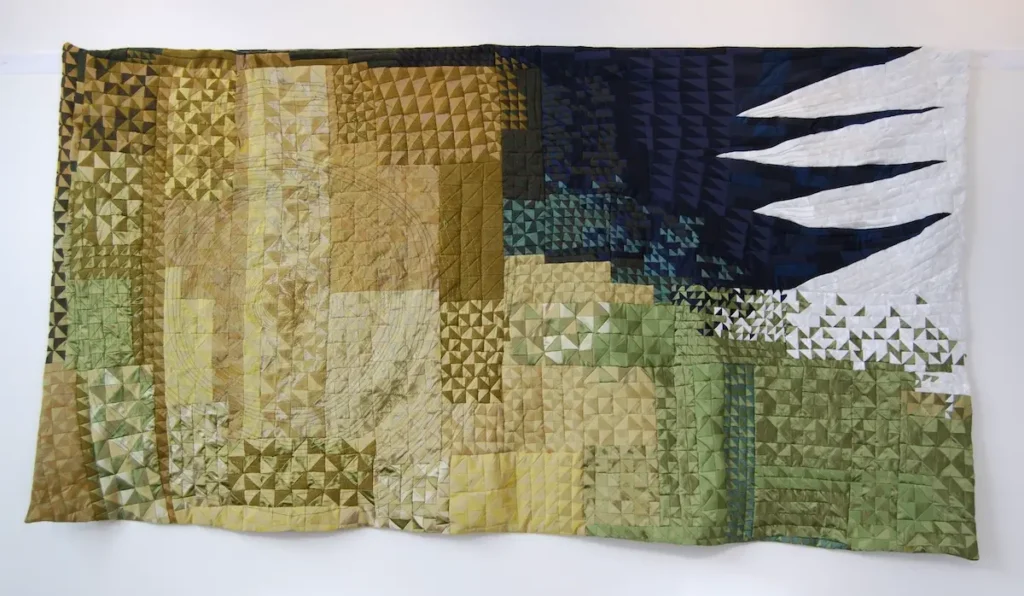
Walk me through your process. How does a new work begin and end? Do you make small studies before large pieces, or dive straight into big work?
A new work starts when a title or image comes and sits in my mind. Once I have that, I select my “palette’ of fabrics and colours, and then I start to sew.
Although the composition evolves as I work, I can always “see” the finished piece. I don’t sketch or make studies. I just start and hope it goes well.
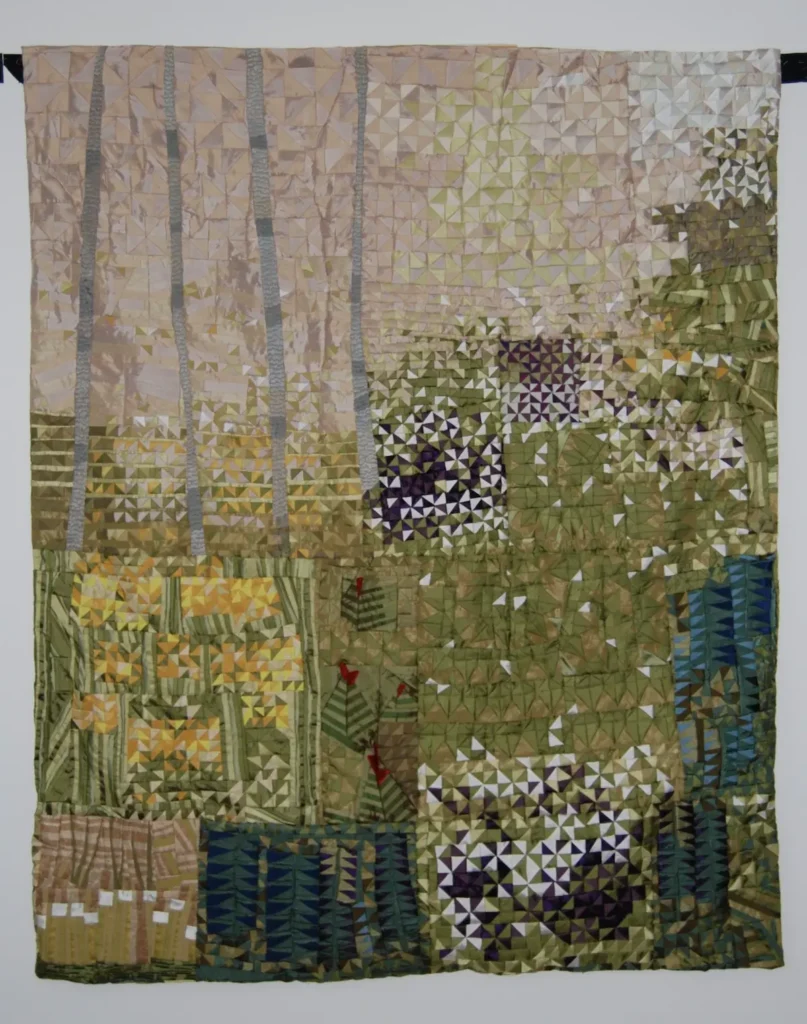
When you hit a technical or creative snag, what is your usual move to get unstuck?
I have a large “bag of fail”. The more confident I am that something is just what I want to do the more likely it is to go into the bag.
Admitting that six or seven hours of sewing is useless can be a bit annoying, but it happens. Because each finished work takes months to make, there are usually times when I am just sewing together lots and lots of little pieces. This allows me to think forward to how the whole will fit together.

How do you stay curious and avoid getting stuck in repetition?
When I start to feel that things are getting repetitive it means that I have come to the end of a theme. I can return to that theme again later but until then I let new ideas trigger new images.

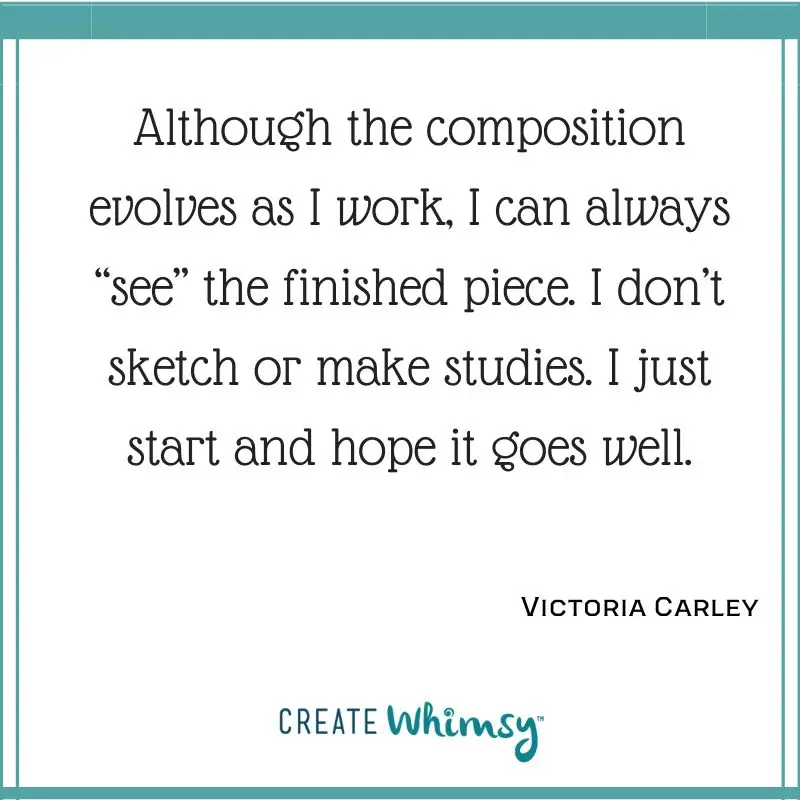
Where can people see your work?
At any given time, I usually have a few pieces in group shows such as World of Threads and the Studio Art Quilt Association’s regional and international shows. I am currently looking for a new gallery as my dealer has retired.
https://victoriacarleytextiles.com/
https://www.instagram.com/victoriacarleytextiles/
Interview posted November 2025
Browse through more inspiring art quilts on Create Whimsy.

